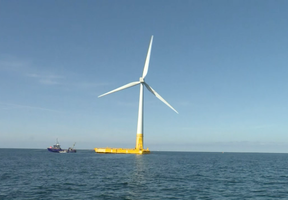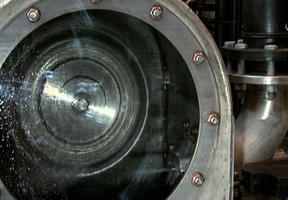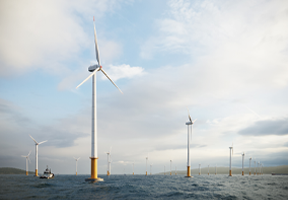50 Years of Oil and Gas Geopolitics
10 min read
Middle East conflicts, financial crises, the war in Ukraine... Discover the key dates in the geopolitics of oil and gas since 1973.

© MICHEL GANGNE - AFP - Energy and geopolitics are closely intertwined. Here, we see oil wells on fire during the first Gulf War in June 1991.
1973: The Yom Kippur War
The Yom Kippur War between Israel and several Arab states gave rise to what oil-importing nations termed the "first oil crisis". Here the Organization of Petroleum Exporting Countries (OPEC) used the "oil weapon" by proclaiming an embargo on countries supporting Israel. prices were multiplied by 4.
1974 – 1980: The Counter-Attack by Oil-Importing Countries
Following cost-cutting measures and rationing – a shock to the West after so many years of growth – oil-consuming countries reacted by exploring other forms of energy, like nuclear . They also began developing new technologies that otherwise would have taken longer to get off the ground, paving the way for a production revival in mature U.S. oil fields and production in the North Sea, for example. The result was a global rise in non-OPEC production.
1980 – 1981: The Iranian Revolution
Under the combined effects of the Iranian revolution, the start of the Iran-Iraq war and the revival of world demand, the price of oil doubled between 1978 and 1981. It was the second oil shock, but this time demand fell, and technology continued to advance, setting the stage for a price decline in the following years.
1986: OPEC's Annus Horribilis
With production continuing to rise in non-OPEC countries, the situation had become unbearable for the cartel by 1985. Saudi Arabia first attempted to stabilize plummeting prices by decreasing production. Then in December 1985, it performed an about-face by announcing that it would sell its crude oil unconditionally at market price to claw back market share. Prices plummet to around thirty dollars a . This was the “oil counter-shock”. In late 1986, Saudi Arabia abandoned its failed offensive and allowed OPEC to re-establish production quotas.
1980 – 1988: The Long Iran-Iraq War
Iran and Iraq, two of OPEC founding members, embarked on an interminable war that would cost nearly one million lives and inflict severe damage on both countries' oil facilities. Among the many root causes was Iraq's desire to increase its access to the Gulf and consequently boost oil exports.
1990 – 1991: The Iraqi Invasion of Kuwait
The price of oil was one of the fundamental causes of the first Gulf War, triggered by Iraq just out of its bloody conflict with Iran. Under direct threat from Kuwait of further downward pressure on oil prices, Iraq invaded the emirate. An international coalition forces the Iraqi army to withdraw. The regime held on to power but had to withstand severe sanctions, including the "Oil-for-Food" program that would remain in place until the Second Gulf War in 2003.
1990s: The Rise of LNG
Toward the end of the century, liquified natural gas (LNG) started to occupy a growing place in energy markets. As LNG can be shipped and does not rely on land-based pipes for transportation, it has created a for gas alongside long-term contracts between countries. From 2022 onwards, LNG transport by will overtake pipeline transport.
1998: The Asian Financial Crisis
The Asian financial crisis took the world by surprise, and OPEC was no exception. After increasing production in 1997, the cartel took a severe blow when the crisis pushed oil prices down to historical lows of less than $20 a barrel.
2003: The Second Gulf War
Following the attacks of September 11, 2001, the United States intervened in Afghanistan, then accused the Baghdad regime of supporting al-Qaeda terrorists and possessing weapons of mass destruction. Leading a smaller international coalition than in 1990, the United States occupied Iraq and massively destroyed its infrastructure (bridges, water treatment plants, power stations, etc.). Iraqi production was close to zero. Despite the war, oil prices do not skyrocket, thanks to OPEC's intervention.
2007: The Shale Gas Revolution
Large-scale exploitation of shale hydrocarbons begins in the United States when the price of conventional hydrocarbons has recovered for good. This marked the beginning of the "shale gas revolution”.
2007 – 2008: Upward Price Spiral
Strikes in Venezuela, production stoppages in Nigeria and other regional disruptions dragged global oil supply down. At the same time, increasing affluence in China and other emerging economies drove demand to dizzying new heights. After selling for $96 in January 2008, the price of crude oil soared to $144 in July of the same year.
2008: The U.S. Subprime Crisis
The collapse of the U.S. property market crippled the country's banking system before spreading to the rest of the world, sparking the worst economic crisis since the Great Depression. Global demand for oil contracted for the first time since 1982-83 just after OPEC had increased production. As a result, oil prices decreased to $35 a barrel.
2009 – 2014: The Arab Spring
Oil prices were volatile over the period as Iran threatened to block the Strait of Hormuz, a strategic oil shipping route, and the Arab Spring led to uprisings in several oil-producing countries. This was exacerbated by strong growth, and hence higher demand, in emerging economies. Consequently, oil prices rose steadily and squeezed economic growth worldwide. Some experts even warned of a "creeping oil crisis".
2010 – 2020: Redrawing the Map of the Energy World
In 2010, China overtook the United States in terms of consumption, reflecting its impressive economic expansion. Other countries have “emerged”, such as India and Brazil. Europe, on the other hand, has reduced its consumption by 10%, thanks to its efforts to improve energy sufficiency and efficiency. Thanks to , the United States has become self-sufficient in natural gas, and since the early 2020s has been the world's leading exporter of LNG. Their oil self-sufficiency has risen from one-third in 2005 to 65% by 2022. This progress towards energy self-sufficiency could lead the United States to become less involved in conflicts in the Middle East, and thus to a degree of disengagement.
2022 – 2024: War in Ukraine
On February 24, 2022, Russian armies entered eastern Ukraine. Vladimir Putin, the Russian president, was counting on a “blitzkrieg” (rapid and intense attacks aiming at quickly overwhelming Ukrainian defenses), but the war quickly got bogged down. On September 26, 2022, sabotage rendered the two gas pipelines linking Russia's natural gas production centers to Germany under the Baltic Sea unusable. Economic sanctions against Russia by the European Union (EU) lead to a massive (but not total) reduction in Russian oil and gas imports. Almost half of Europe's gas imports used to come from Russia, with this share falling to 10% by the end of 2024. The EU has switched to LNG imported from all over the world by LNG tankers. The biggest beneficiaries are the United States, the world's leading producer of natural gas.
Who is the world's largest exporter of liquefied natural gas (LNG)?
The United States
Has the war in Ukraine put an end to European hydrocarbons imports from Russia?
No, the EU still imports 10% of Russian gas, and a minimal share of oil.





















